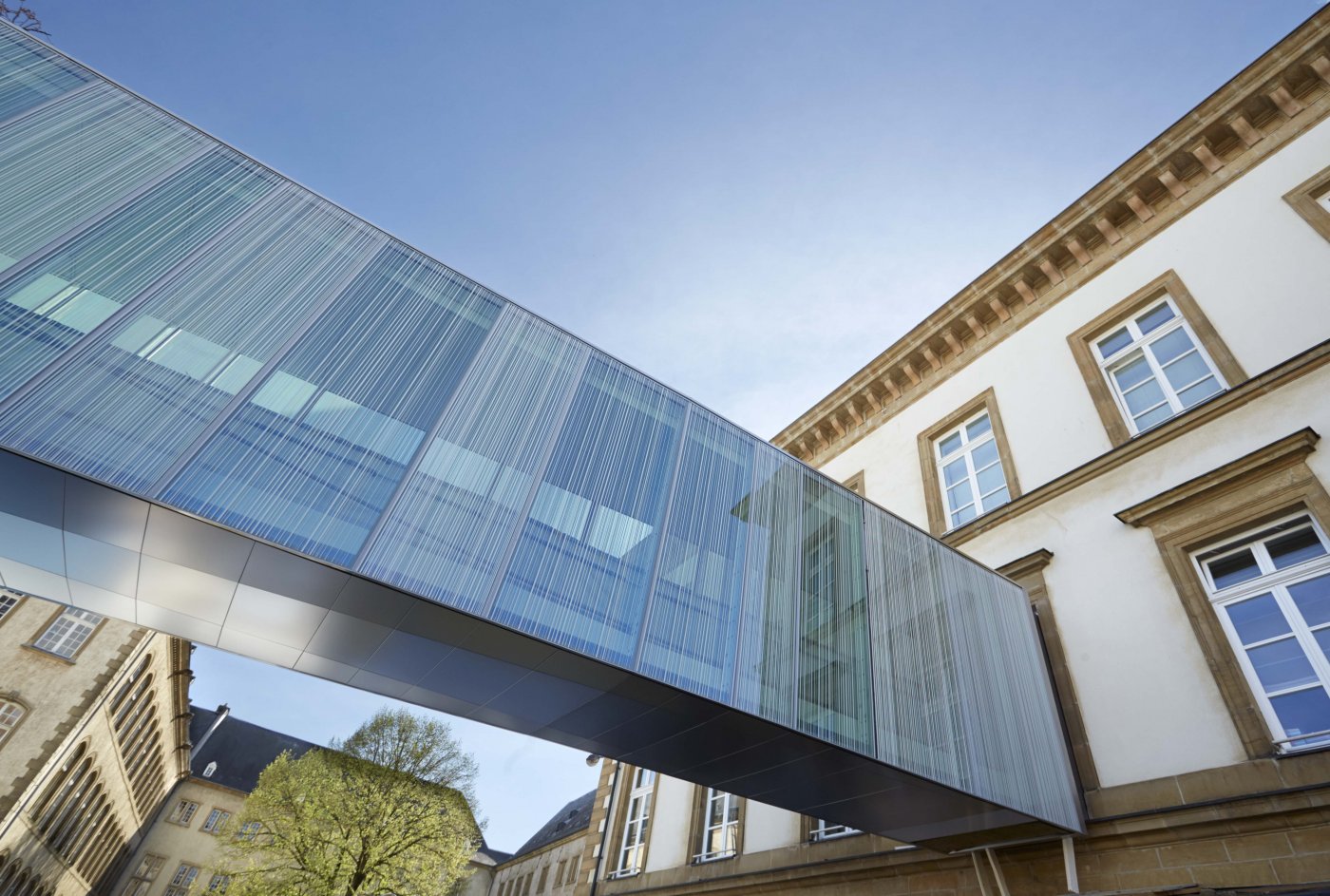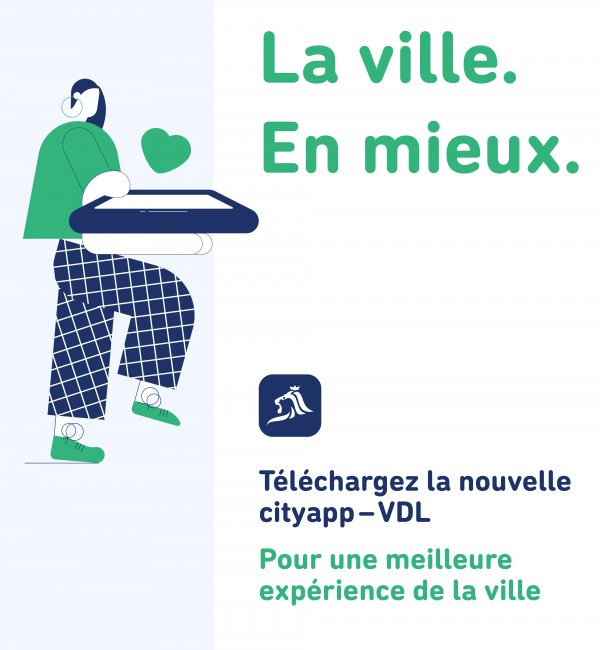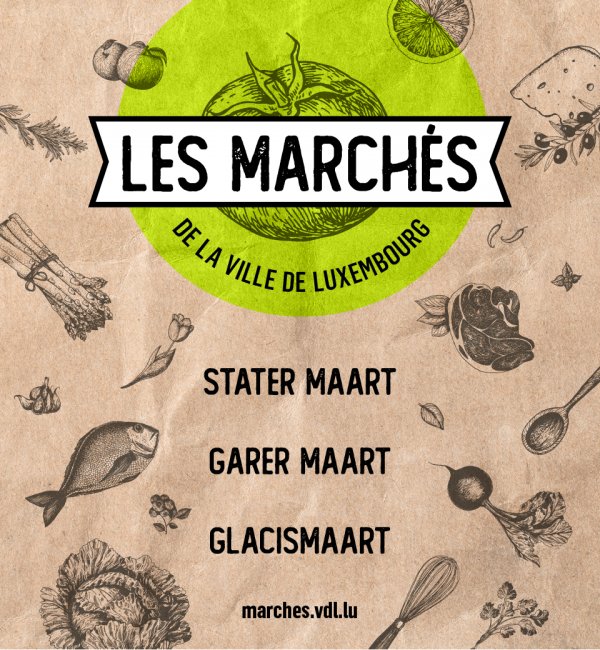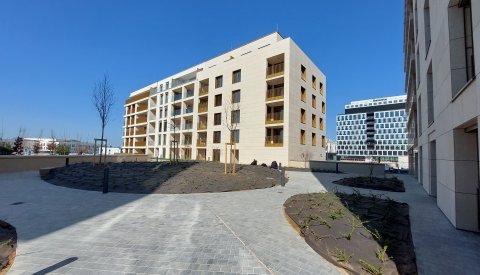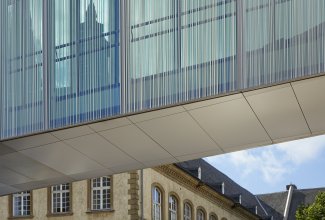Summary record
Video
Additional powers for municipal workers
Question posed by Claudine Konsbruck
The law of 27 July 2022 relating to municipal administrative fines and additional powers for municipal workers (loi du 27 juillet 2022 relative aux sanctions administratives communales et à l'élargissement des compétences des agents municipaux) is scheduled to take effect on 1 January 2023.
This law, which municipalities have long been awaiting, sets out a series of new measures available to municipal authorities, and specifically a list of the offences and anti-social behaviour that are now liable to incur a fine.
How does the largest municipality in the country intend to implement this major new law?
Does the college of aldermen plan to update the City's General Regulations on Public Order and Safety (Règlement général de police de la Ville), and if so, by when?
How will municipal workers be made aware of and trained on these new rules and measures?
Will Luxembourg City be ready for the deadline of 1 January 2023?
RESPONSE PROVIDED BY MAYOR LYDIE POLFER
A meeting between the Secrétariat général (General Secretariat) and the Service Parking (Parking Department) was held in July 2022 to conduct an initial assessment of what the entry into force of the law of 27 July 2022 on municipal administrative fines will mean for the Service Parking. In September, there was a second meeting with the other departments involved: the Recette communale (City Treasury), Service Parking, Cellule juridique (Legal Unit), Service TIC (ICT Department), Service Hygiène (Sanitation Department), Direction des Ressources humaines (Human Resources Directorate – DRH), Service Espace public, Fêtes et Marchés (Department of Public Spaces, Festivals and Markets), Service Finances (Finance Department) and Direction des Affaires sociales (Social Affairs Directorate). The purpose of this meeting was to organise and implement the new measures stipulated by the law.
Municipal workers will be authorised to intervene and collect a €25 administrative fine for 17 different offences, hence the involvement of the Recette communale.
The Cellule juridique will suggest the necessary adjustments to the City's General Regulations on Public Order and Safety, which will be submitted to the college of aldermen and the Disputes, Settlement and Security Committee (Commission du contentieux, du règlement et de la sécurité), and then to the municipal council.
The DRH is involved because additional workers need to be hired for the Service Parking, whose name will be changed to reflect the department's expanded duties. The basic training for municipal workers will be organised by the Ministry of Home Affairs (Ministère de l'Intérieur) based on a Grand Ducal regulation that is not yet available. The City has not yet been told about the content of this training. It is therefore unclear if it will be possible to fully enforce the new provisions starting on 1 January 2023. However, this does not depend on us. The City will have adjusted its General Regulations on Public Order and Safety by the end of 2022.
Old Slaughterhouse in Hollerich
QUESTION POSED BY CLAUDIE REYLAND
During the joint meeting of the commissions for culture and for urban and economic development on 28 April 2021, it was reported that the specifications for an architectural design competition would be shared with us in autumn 2021. However, we have yet to see them.
At the annual general meeting of the Hollerich local interest group on 28 September 2022, we learned that a file on this topic had been shared with the group.
Why wasn't the municipal council apprised of the progress of the works on the project involving the old slaughterhouses in Hollerich? Where does the project involving the old slaughterhouses in Hollerich currently stand? What are the next steps and what is the estimated timetable?
RESPONSE PROVIDED BY MAYOR LYDIE POLFER
This project is of huge importance to the college of aldermen. As was announced at the meeting Councillor Reyland referred to, an architectural design competition was launched. The specifications drafted by the group consisting of Jim Clemes Associates and Paris-based firm ARP-Astrance were drawn up jointly with the City's Service Coordination culturelle (Cultural Coordination Department) and the site's current and future users (young artists, skateboarders, etc.).
The two-phase Europe-wide competition was published on 28 August 2022. The files from the application phase are currently under review. In the second phase, a small number of candidates – four or five – selected by the jury will be invited to produce an architectural design based on the specifications. There is nothing to stop the proposals of the shortlisted candidates from being presented at a joint meeting to members of the Commission de la culture (Cultural Commission) and the Commission du développement urbain et économique (Urban and Economic Development Commission), before the respective firms finalise their designs. The winner or winners will be announced in May 2023. Even if they receive first prize, that does not mean that the design in question will automatically be produced as is. This will be decided by the municipal council, taking into account the recommendations of the relevant advisory committees.
This matter is therefore progressing nicely. I also want to mention that various activities take place at the site of the old slaughterhouse, such as during the monthly open days held there. As a result the "Schluechthaus" is a hive of activity these days. We are using this as a jumping-off point which we can build on. I highly recommend that you all take your families to these open days, because they are a lot of fun.
We would be happy to forward the specifications to any municipal councillors who would like to take a look at them.
Public viewings of the football World Cup in Qatar
QUESTION POSED BY CLAUDIE REYLAND
The football World Cup in Qatar has stirred up some controversy in light of its social and environmental impacts. Its social impact has been catastrophic: 6,500 deaths on sites connected to the World Cup (the eight stadiums, airport, hotel and public transport infrastructure), labourers subjected to conditions closely resembling slavery, and more. The environmental situation is just as disastrous: open-air stadiums that are air conditioned in a country where temperatures can reach 50°C, air shuttles to take spectators to the stadiums, etc. For these reasons, many French cities have decided not to broadcast matches of this World Cup on giant screens. On top of the arguments I just listed, there is the fact that these giant screens consume a huge amount of energy. Some media outlets have reported that the City of Luxembourg will not be organising public screenings of the 2022 football World Cup. Can the City confirm this information?
RESPONSE PROVIDED BY MAYOR LYDIE POLFER
The City of Luxembourg was among the first cities to announce that it would not be organising public screenings of the 2022 football World Cup. We stand by this decision. The City informed the press of this a month ago during the presentation of the energy-saving measures we are adopting amid the current international crisis. In addition, organising a public screening of the 2022 football World Cup would hardly be practical considering that winter is upon us. So cafés, for example, would be a more suitable place to watch the World Cup given the weather.
Everything Councillor Reyland said about Qatar is correct. However, it seems to me that the Luxembourg government has not distanced itself in this respect – I'm thinking of the Minister for Sport and the Minister for Mobility, who is still allowing Qatar Airways to land in Luxembourg. So let’s keep this in context.
Besides, we have to wonder how it is possible that the Olympics might be held there in a few years. Some decisions really are hard to fathom!
Temporary closure of the Ulysse shelter and search for temporary housing for its residents
QUESTION POSED BY CHRISTA BRÖMMEL
Caritas posted on Facebook that the Ulysse shelter will be closed for construction for around two years starting in June 2023. Caritas wants to know what alternatives can be offered to its clients so they have a place to sleep and shower. The purpose of the renovations is to adapt the housing concept so it better meets the needs of the people it accommodates. The number of people per room will be reduced, meaning that the total capacity of the shelter will also decline. Around 40 people who are currently being housed at the Ulysse shelter will need to find other housing by June 2023.
The Facebook message in question gave me pause, given that Caritas is a long-standing partner of the City of Luxembourg.
Has the search for replacement facilities begun? Does the City intend to actively help rehouse the current clients of the Ulysse shelter? Of course, this is first and foremost the responsibility of the Ministry of Family Affairs (Ministère de la Famille), but given that the Ulysse shelter is located in the capital, I believe that the City of Luxembourg also bears a certain responsibility.
RESPONSE PROVIDED BY ALDERMAN MAURICE BAUER
This is a very timely topic. Councillor Brömmel is not the only one who read Caritas's message: RTL also read it and published a report on it yesterday. The Minister for Family Affairs responded today, stressing that her ministry will of course help Caritas find a solution.
Two weeks ago, Mayor Polfer, the Prime Minister, the Minister for Family Affairs and I visited a number of facilities located in the Dernier Sol area. The City is directly involved with the Bistrot Courage and the night shelter and social housing located above it, but it is not directly involved with the Ulysse shelter as we have not entered into any agreement related to it. We have been informed of Caritas's situation and needs. The City does not have a facility of that size that can be made available for two years, but as I just said, the Ministry of Family Affairs has announced that it will work hard to find a solution that will provide Caritas's clients with decent housing during the works.
RESPONSE PROVIDED BY MAYOR LYDIE POLFER
I am confident that the Ministry of Family Affairs will find a suitable solution, considering that it did so two years ago when the Ulysse shelter had to be closed due to legionnaires' disease. The clients were rehoused in small facilities located throughout the country.
Rue du Commerce school playground
QUESTION POSED BY CATHY FAYOT
In 2019, a working group made up of faculty members and parent representatives from the Rue du Commerce school developed a project to make various improvements to the school playground. At the moment, the playground is very unattractive, with a fence that makes it feel like a prison and a dark, dirty walkway on the foyer scolaire side.
Among other things, this project, which aims to improve the quality of life of the pupils and teachers during breaks, includes the installation of benches and an awning that will allow the children to play in the shade and the creation of an area covered in bark chippings so the children can play on the ground.
In 2019, the working group presented its project to the City's politicians and administrative leaders. Since then, the only response it has received from the City has been the information that because the underground car park has a fragile concrete ceiling slab, some aspects of the redevelopment cannot be carried out in the school playground.
The working group does not have a City liaison. What department can it contact to find out what it could do to improve the layout of the school playground to make it more inviting? What is the condition of the concrete ceiling slab of the underground car park, and what does this mean? What support and technical assistance might the working group be able to receive?
RESPONSE BY ALDERWOMAN COLETTE MART
I am well acquainted with this project because I personally attended several meetings of the working group in 2019, along with the ministry representative appointed to help plan the redevelopment of school playgrounds.
The Service Architecte (Architecture Department) told me that it was impossible to find a company to carry out the project developed by the working group.
Planning the redevelopment of the school playground is complicated because it requires cooperation among several departments – namely, the Service Enseignement (Education Department), Service Architecte and Service Parcs (Parks Department). Not only that, but it requires a structural analysis to figure out if the concrete ceiling slab of the underground car park can withstand any additional loads. The same problem arose for the new Rollingergrund school, where a function room is located beneath the playground.
Redeveloping the Rue du Commerce school playground would significantly enhance the Gare district. There is a reason for the existing fence, which is to keep people from doing drugs in the school grounds and ensure that no syringes and condoms are found there in the morning. So it is unlikely that we can get rid of the fence, because the children's safety must take priority.
Pending the start of the redevelopment project, the children will have the opportunity to decorate the whole area, working with an artist to paint the walls and the ground.
I should also point out that the children have a wonderful playground on Place de Strasbourg – which is close to the school – so we can't say that children have nowhere pleasant to go in the local area.
District heating
QUESTION POSED BY LINDA GAASCH
The war in Ukraine has thrown into sharp relief just how dependent Europe is on Russian gas and how there is an imminent need to reduce gas consumption. We need to stop using gas not just for geopolitical reasons, but also for climate reasons, given that gas is a CO2-emitting fossil fuel. The strategies outlined several years ago must therefore be revisited.
District heating that uses heat produced from renewable energies is an alternative to gas heating. This alternative is increasingly being promoted and supported at a European level and in our surrounding countries. A study conducted by German experts describing transformation scenarios for the energy system found that in every scenario, increasing district heating is shown to achieve our climate goals (source: "Langfristszenarien für die Transformation des Energiesystems in Deutschland").
The City of Luxembourg has several district heating networks and it participated in the pilot phase of Klima Agence's (formerly myEnergy) "Wärmekataster". Some of these power plants that are in place already use renewable energies or will soon be using them. However, the 2020 activity report of the Service Énergie (Energy Department) states that there are currently no plans to expand existing networks.
How is the City promoting district heating among residents, especially for existing buildings? Do the installed networks still have capacity available to supply new customers? If not, are there plans to increase capacity? In light of the multiple crises we are facing now, is the college of aldermen still pursuing its strategy of not expanding the district heating network, as discussed in the 2020 activity report of the Service Énergie? If so, could you explain the reasons for this in detail? What conclusions were drawn from the pilot phase of the "Wärmekataster"? Was the Service Énergie able to identify places with a high density of demand for heating that could be connected easily to the existing network? How does the Service Énergie plan to use the "Wärmekataster" tool in the future?
RESPONSE PROVIDED BY ALDERWOMAN SIMONE BEISSEL
The City has been using cogeneration since the 1990s to produce heating, cooling and electricity. At the time, cogeneration operated solely with natural gas. Due to the high costs, the technology was not an option for individuals and was limited to business customers. As the technology developed, the City began connecting large residential buildings to it. Cogeneration takes place in 11 of the city's districts.
In 2014, a paradigm shift led the government to stop promoting cogeneration powered by natural gas. Since then, the City has been investing in renewable energies to increase power plant capacity. Thus in 2017, the Kirchberg power plant was expanded not by adding gas-powered cogeneration units, but by installing a wood pellet cogeneration system. The Cloche d'Or power plant was built to use heating from the waste treatment process at the Sidor incineration plant.
This was all going to plan, but then the war in Ukraine started, which led to the energy crisis that has been preoccupying us for the past few months. Nationally, the share of renewable energies is only 11%.
As to the question of remaining capacity and network expansion, there are two constraints: the number of units that can be installed in a cogeneration power plant and the pipe diameter, which must be neither too large nor too small. This causes planning issues, given that the city has heavily built-up areas: Luxembourg City has nearly 130,000 residents.
Expanding the district heating networks would be unwise at this time. Any such expansion would be costly and the technology has fallen out of favour, first because the goal is to move away from fossil fuels, and second because the cogeneration power plants emit far too much CO2.
As regards wood pellets, I want to stress that the price of wood has soared in the last few months, forests are in a terrible state and we need to manage forests sustainably, which limits the amount of wood available. The technology is now shifting from the use of wood pellets to the use of biomass, but keep in mind that this implies substantial investment in technical infrastructure. In 2022, the Belair-Limpertsberg network got a new biomass cogeneration power plant. There are plans to expand the Kirchberg power plant so that new buildings that will be built between now and 2034 can be connected to it. As for the energy transition, the City is waging a campaign to encourage the public to conserve energy. The construction of energy-efficient homes has been encouraged for years. The installation of heat pumps is encouraged, but these systems are expensive, are not suitable for all buildings and are not as effective as "conventional" heating. Ice batteries are a revolutionary system.
So there are many interesting and forward-looking technologies, but for now we need to confront our current challenges. There are plans to expand the two large existing power plants, but there are no plans to expand the network in general because district heating is no longer particularly attractive: it emits too much CO2 and the supply of energy poses too many problems.
The thermal mapping tool ("Wärmekataster") is invaluable in that it helps identify hotspots in the city and determine how the City can best respond.
